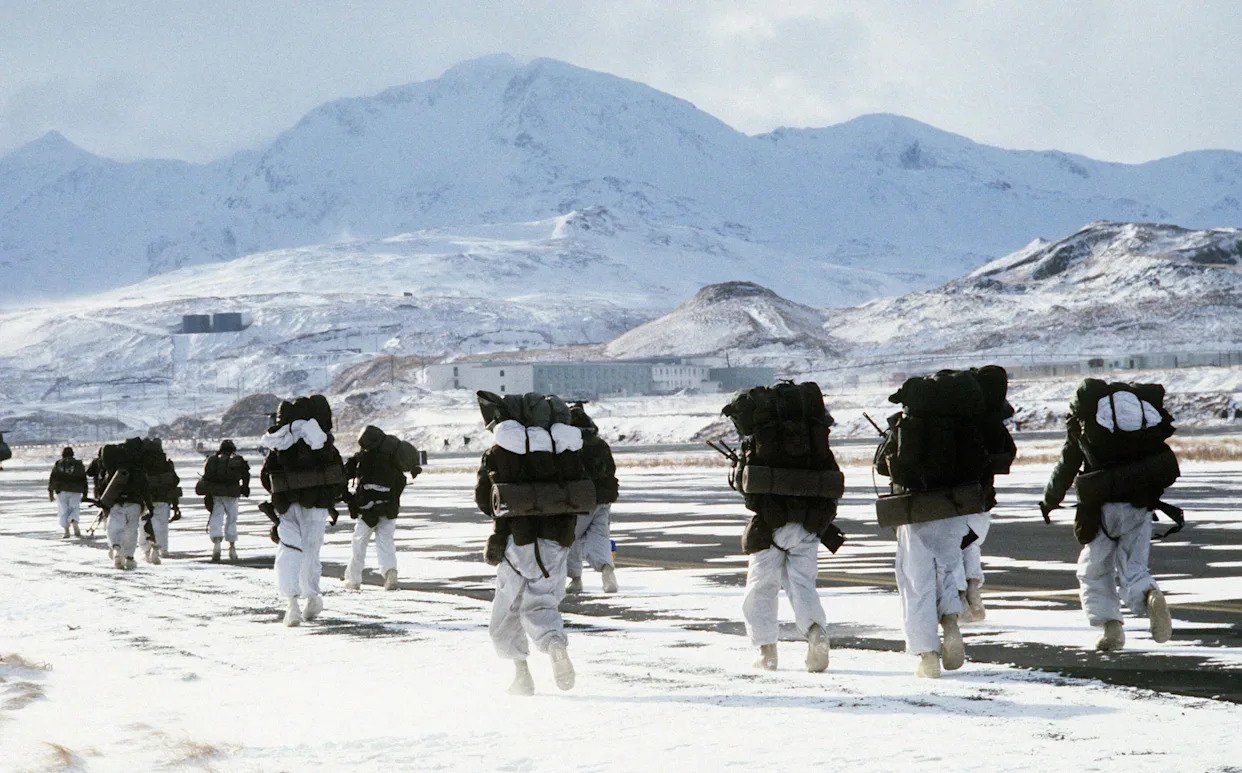
When Donald Trump looks into the eyes of Vladimir Putin this week and decides whether he is serious about peace, it will be in Alaska: the American state on the front line of a new Cold War between Moscow and Washington.
The US has increasingly been forced to scramble warships and fighter jets since the invasion of Ukraine, with Russia and its ally China venturing ever closer to Alaska’s coast.
The Pentagon is looking at reopening its Cold War-era bases in the state in a move that would greatly expand its footprint in the region and signal a grasp for Arctic dominance.
“The Cold War is back,” said Mark Hayward, a former army medic who lives in Nome, on Alaska’s Seward Peninsula. “And in many ways, it’s hotter than the Cold War was.”
The Arctic’s melting sea ice has opened up traditional chokepoints like the Bering Strait, which lies between Alaska and Russia. It has meant new trade routes, more opportunity for military movement by naval and submarine patrols, and sent superpowers scrambling to assert themselves in the region.
US officials openly admit there has been an increase in Russian and Chinese activity – the two often operate in tandem – off the coast of Alaska since 2022.
Late last month, Russian Tu-95 bombers and Su-35 fighters jets were intercepted by the US Air Force when they crossed into the Alaskan Air Defence Identification Zone (Adiz) – though they steered clear of US air space.
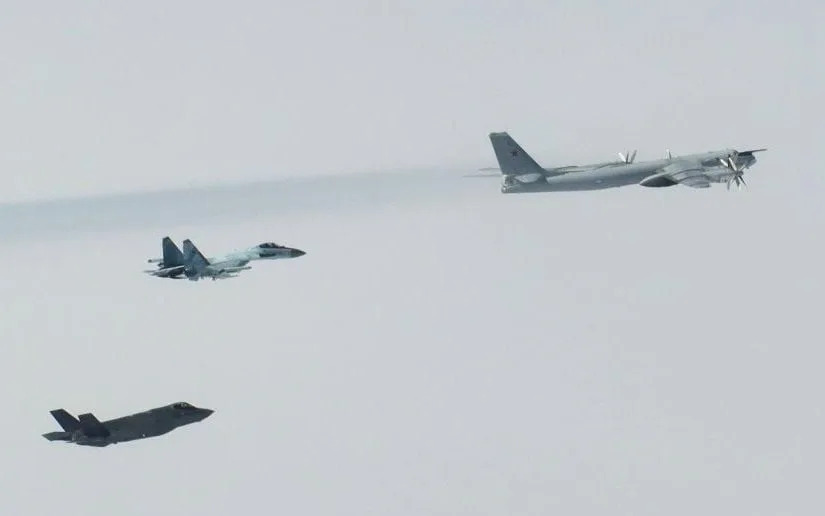
And that was only the most recent activity. There have been at least nine similar incidents across air and sea in the last two years involving Russia or China.
Notably, in September 2024, a Russian Tu-95 cut across the nose of an American F-16 in a “headbutt” manoeuvre that brought both pilots feet from disaster. The US took the unusual step of condemning the “unprofessional” behaviour.
“They’re in our airspace all the time,” said Daniel Volland, an optometrist and member of Anchorage’s assembly. “There’s always a vigilance.”
Alaska belonged to Russia until the mid-19th century, when it was bought by the US following negotiations led by the secretary of state, William H Seward.
At the time, newspaper editorials condemned the decision as “Seward’s folly” – now, with superpowers jostling for dominance in the Arctic, the Alaska Purchase is one of Seward’s crowning achievements.
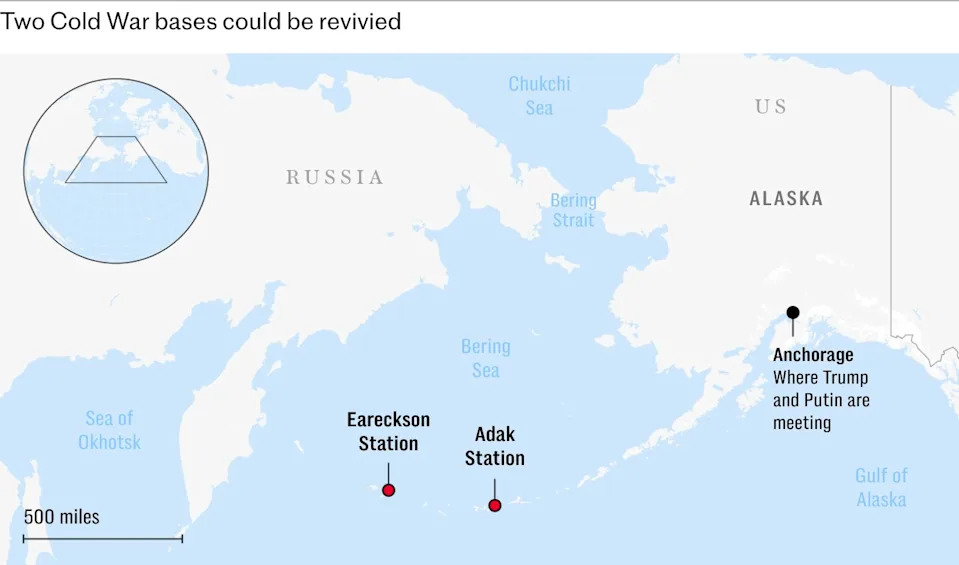
Mr Volland noted that those years of shared history had also brought suspicion among Alaskans of the imperial power of their westerly neighbour, which lies just three miles away at the narrowest points of the Bering Strait.
“We are very proximal to Russia. And there is a legacy of Russian colonialism, about history in Alaska, where they enslaved Alaska Native peoples,” he said.
“A lot of that had to do with the fur trade and the extraction of natural resources that Russia wanted to do here in Alaska. I think that that colonial legacy is part of the scepticism some Alaskans have toward Russia.”
Beyond regular incursions by the Russian military, Mr Hayward said his community in Nome had suffered regular fibre optic cable outages since the start of the Ukraine war in Feb 2022.
“It’s somehow mysteriously cut itself at times when there’s not any ice movement, and at depths where no one should be touching it,” he said.
“It’s a small community up there – talking to people who do the emergency response, they’ll say: ‘Look, this was not an accident. Somebody cut our cable, and they did it again, and they did it again.’”
Mr Hayward volunteered in Ukraine shortly after the outbreak of war three years ago, initially planning to help as a combat medic but eventually putting together a team of volunteers to train Ukrainians to use Javelin and NLAW anti-tank missiles.
Living in Alaska, with Russia increasingly making its presence felt, makes the conflict “very personal”, he said.
“The same Russia that is willing to invade its neighbour to the west with no provocation would be equally willing to sink our fuel barges and leave me and my friends to freeze to death in the dark in the Arctic winter,” he continued.
“They are doing what I would consider direct action missions against critical infrastructure in the Arctic. Nobody wants to call it what it is, but those are acts of war.”
The US is now seeking to assert itself in the Arctic and openly weighing up options for opening military bases that closed in the wake of the Cold War.
One of them is Adak, a former air facility located between the Bering Sea and Pacific Ocean that was used for submarine surveillance and reconnaissance against the Soviet Union before being decommissioned in the 1990s.
It boasts three piers, two 8,000-ft runways and one of the world’s largest fuel storage depots, and was recently used in military exercises as part of the army’s Exercise Northern Edge. Experts believe it could be converted into a working base relatively easily.
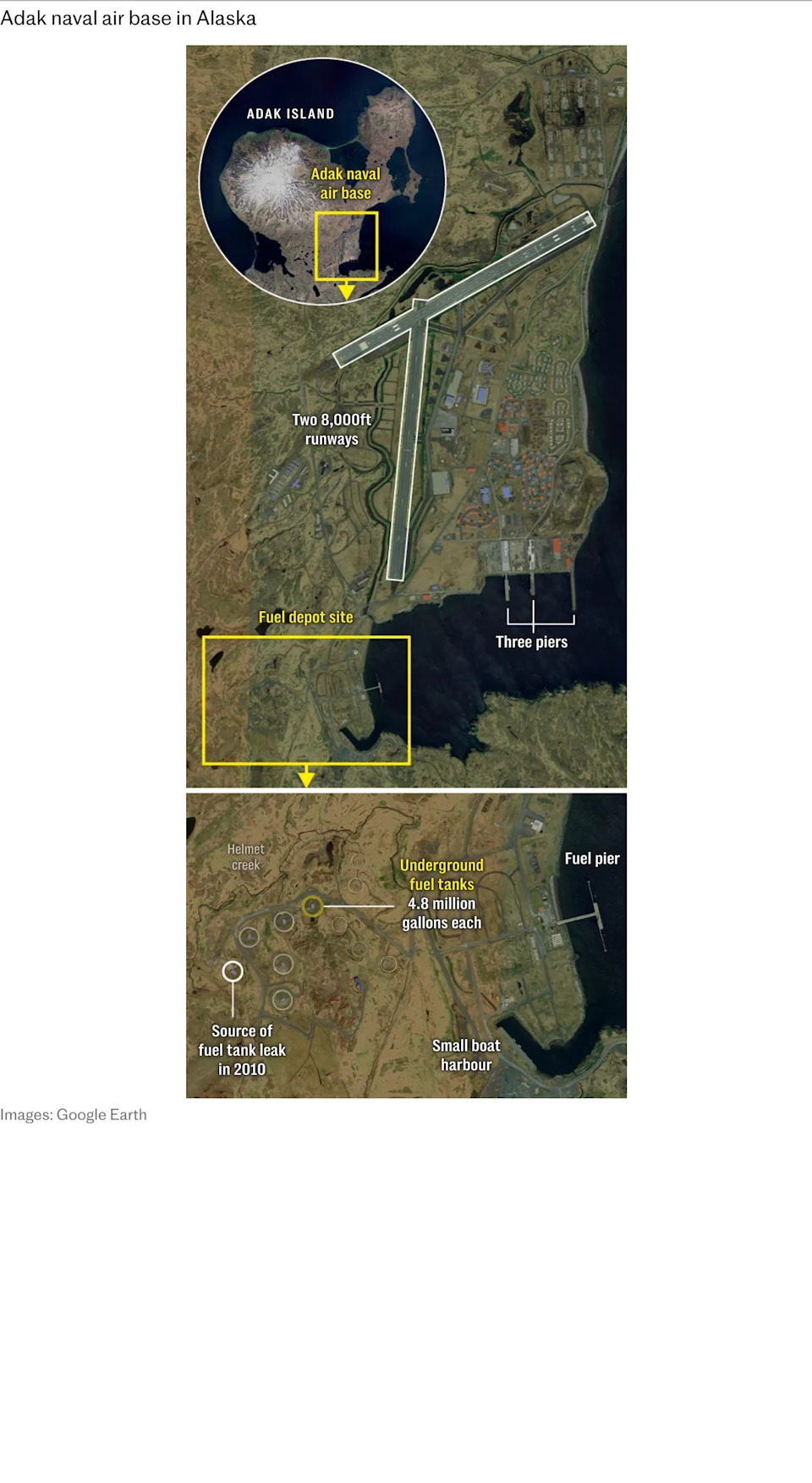
Another base under consideration is Eareckson Air Station, which like Adak is located on the remote Aleutian Islands chain.
Admiral Samuel Paparo, commander of the United States Indo-Pacific Command, said in April that the military was evaluating how to reopen the facilities to enhance the US’s presence in the Arctic.
Doing so would give Washington “time and distance” on any invading force, he told senators at a briefing, because they would “enable up to 10 times the maritime patrol reconnaissance aircraft coverage of that key and increasingly contested space”.

Troy Bouffard, a former aide to Alaska Senator Lisa Murkowski, said reopening Adak would be a “brilliant” move.
“That island is in such a geographically strategic place. It’s quite awesome… you can put lots of sensors there so you detect things way before they get to you,” said Dr Bouffard, now assistant Professor of Arctic Security at University of Alaska Fairbanks.
“And if you ever zoom in on that thing on Google satellites, you’ll be surprised how much is on that island, including that long runway. It is really well developed.”
Putin will land in Alaska on Friday to meet with Mr Trump at Joint Base Elmendorf-Richardson, on the northern edge of Anchorage, according to CNN.
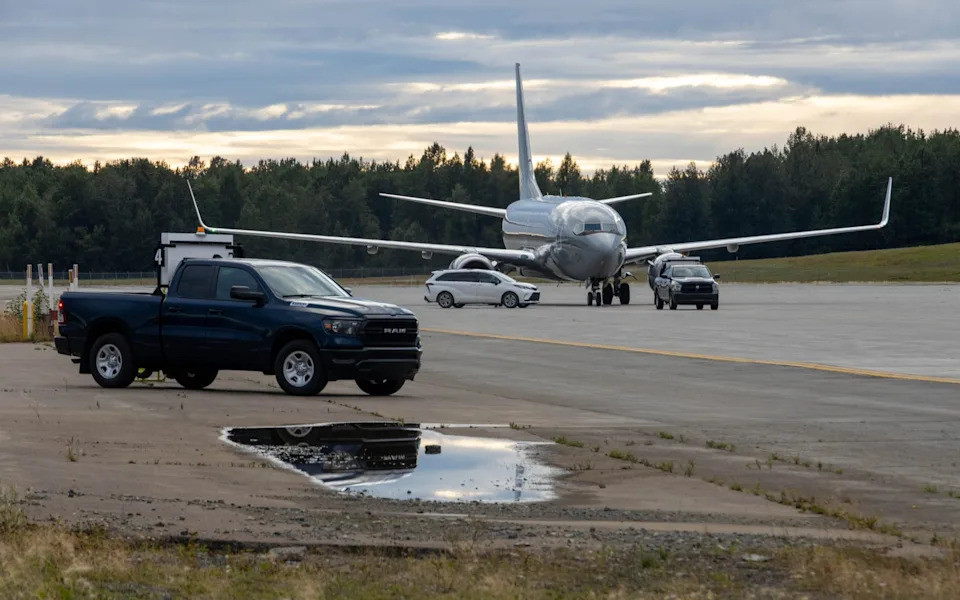
Mr Hayward believes the Alaska senators, Lisa Murkowski and Dan Sullivan, understand the stakes of the summit and why emboldening Putin would be a disaster – for Alaska as well as Ukraine.
Of Mr Trump he is less certain.
“Russia is the biggest threat to world peace and the biggest threat to Alaska since the Nazis were sending ski teams up above the Arctic Circle during the Second World War,” he said.
Now, he continued, Mr Trump “needs to be extremely careful that Anchorage doesn’t enter the lexicon of appeasement the way Munich did in 1938”.
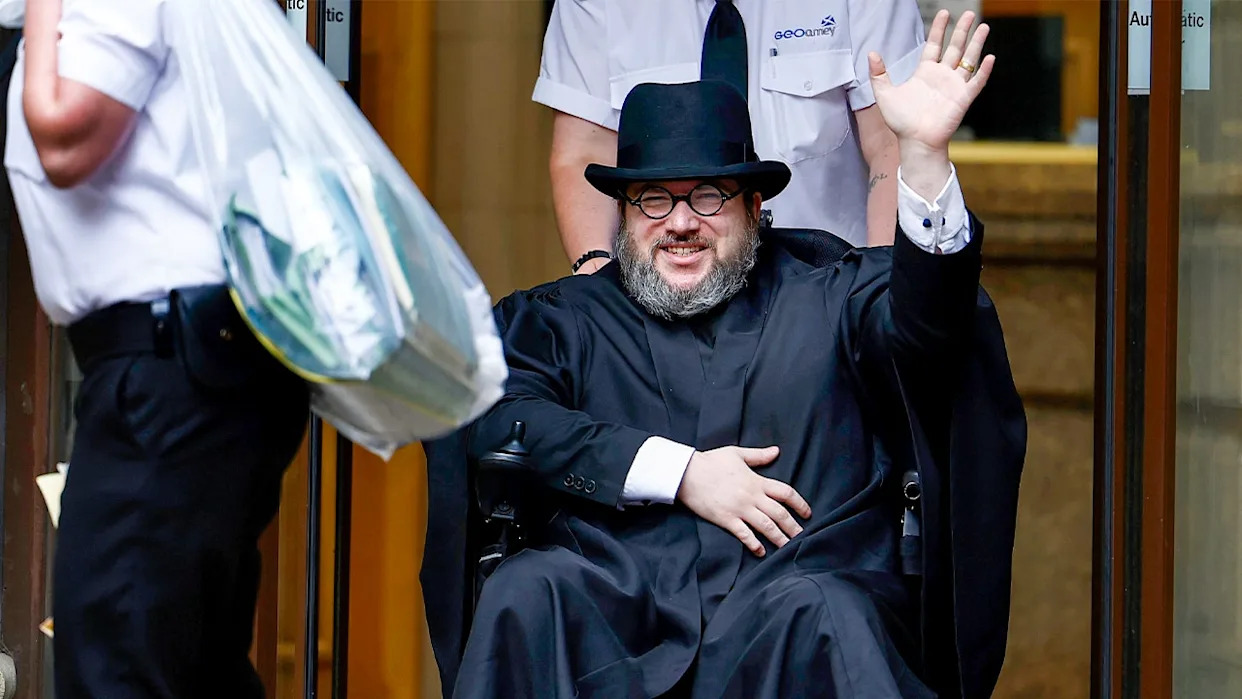

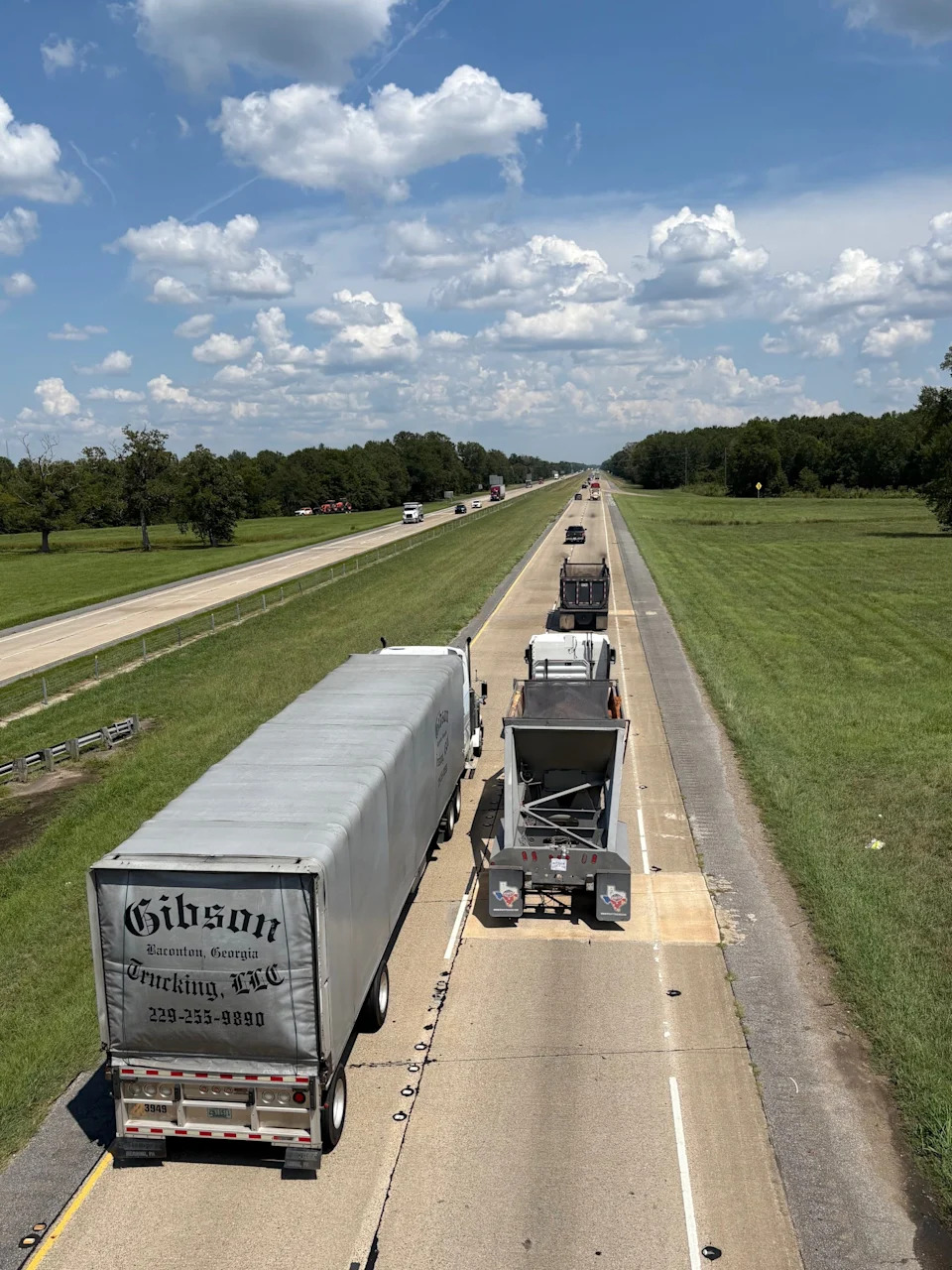
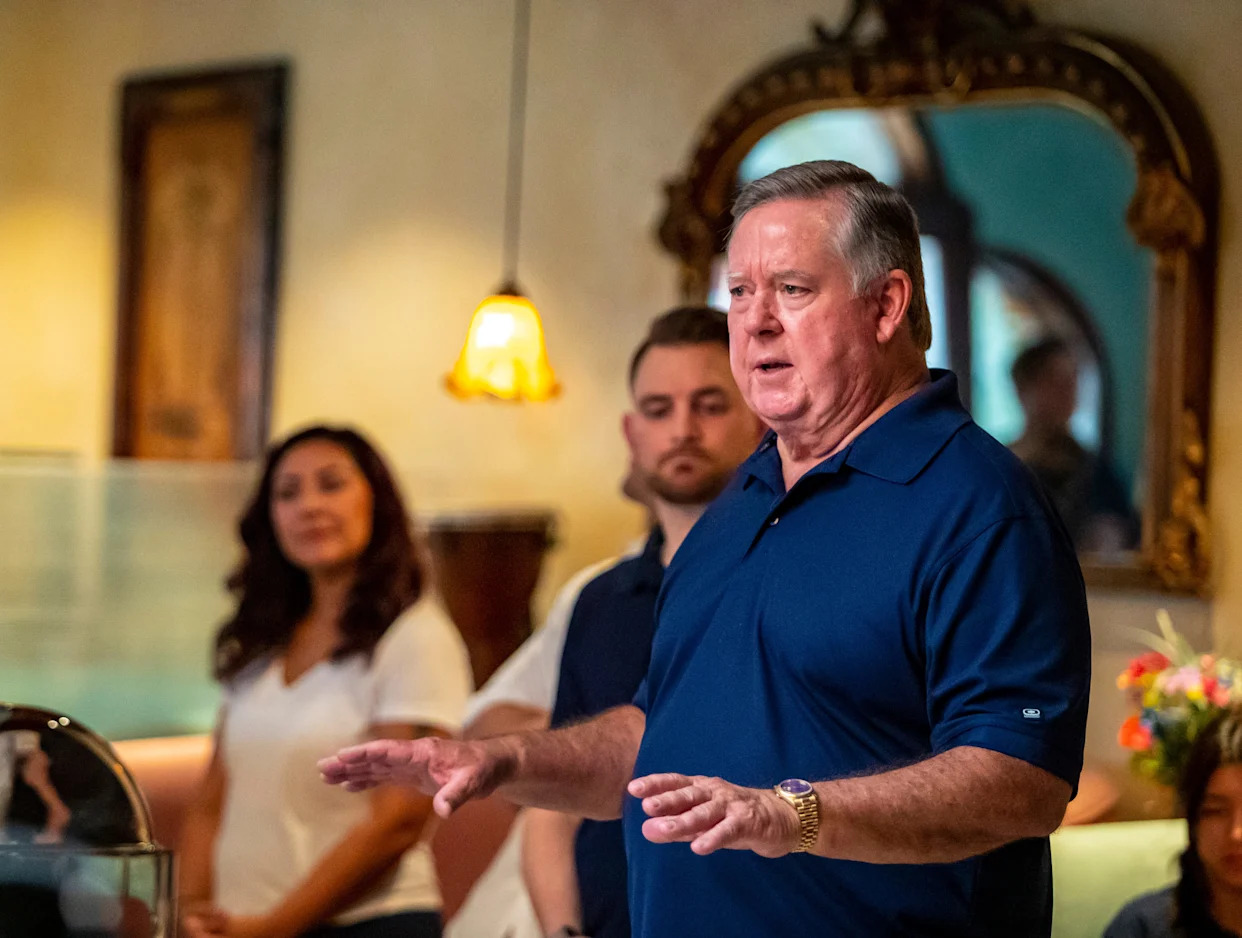
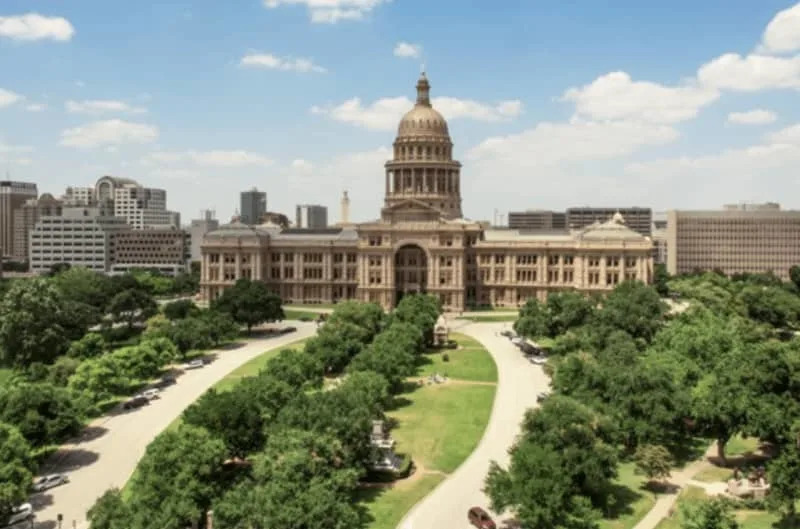
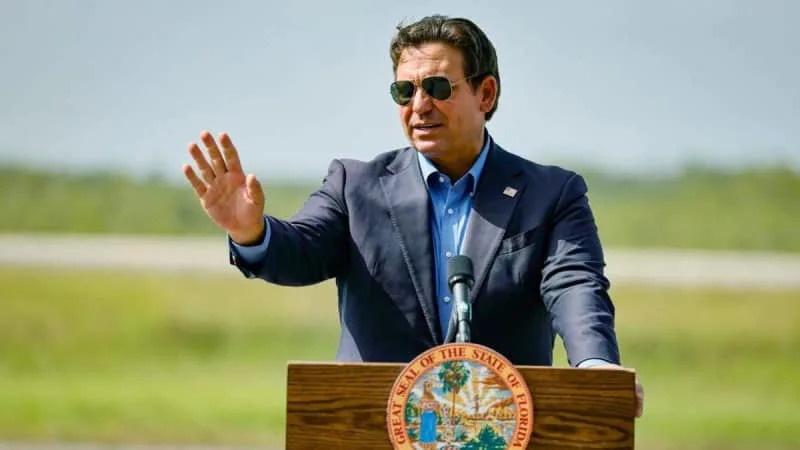
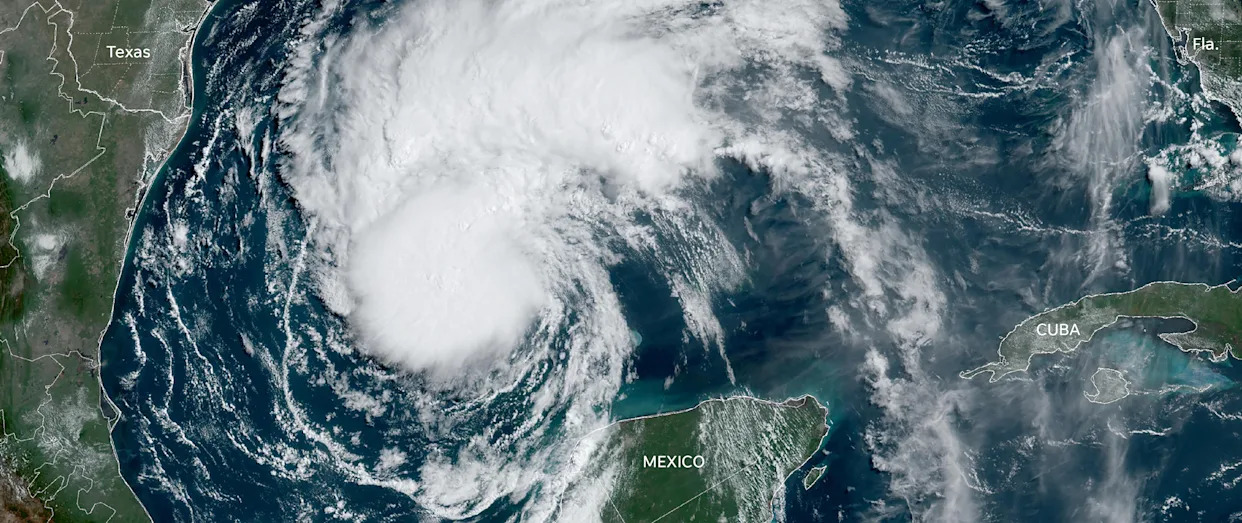
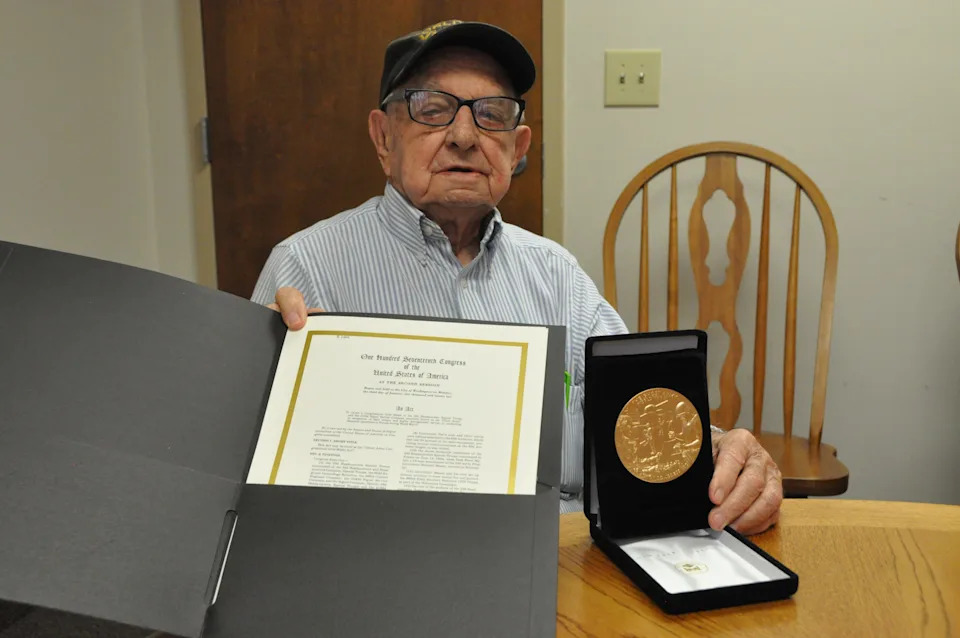
Comments